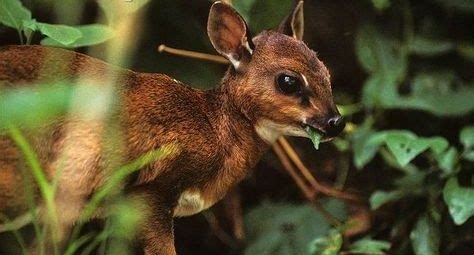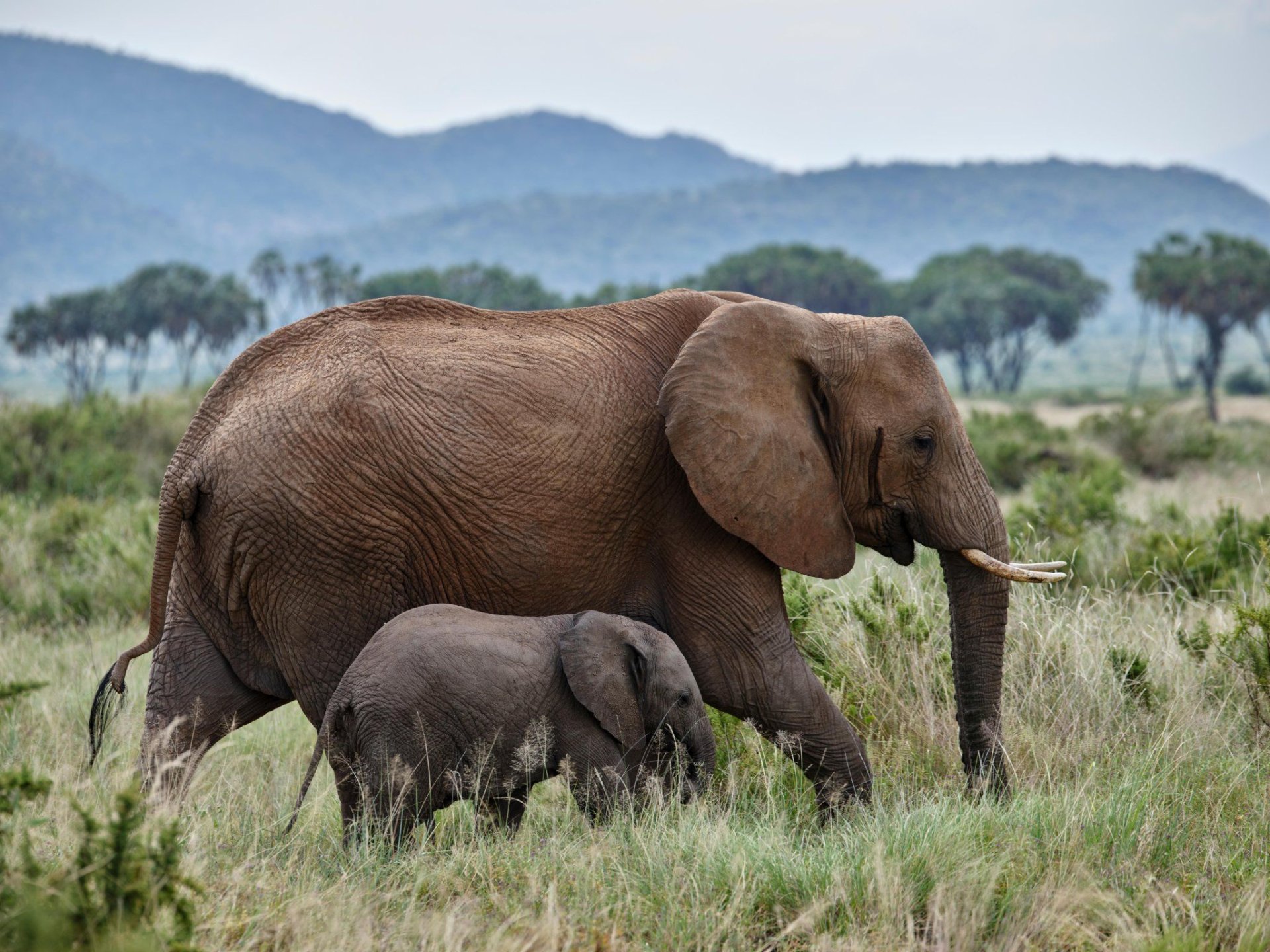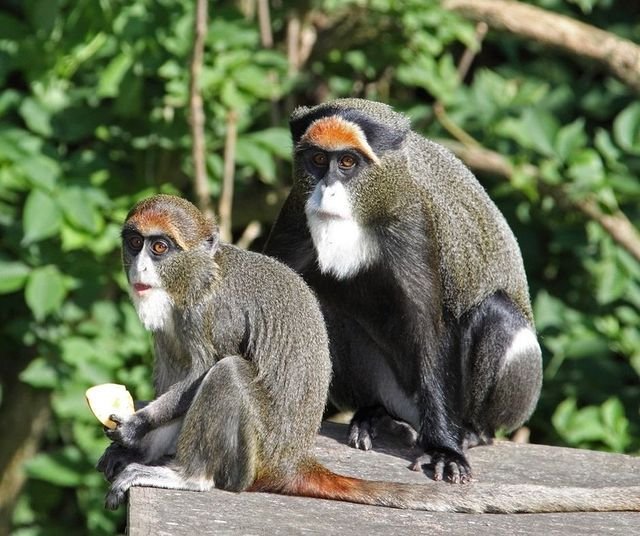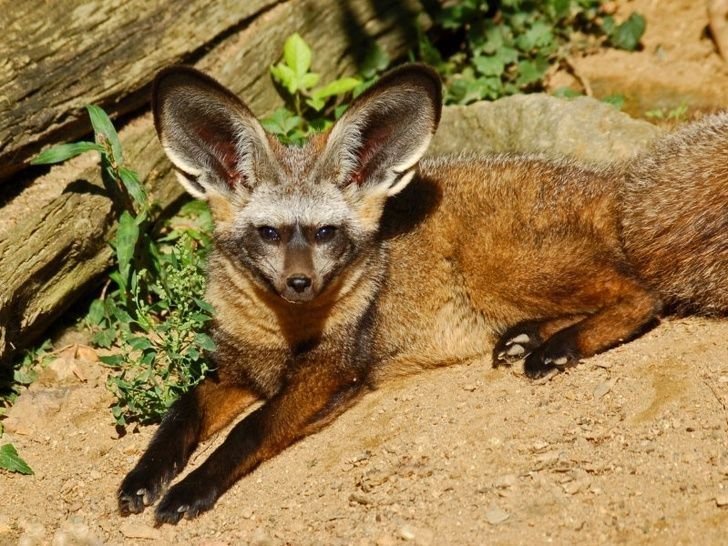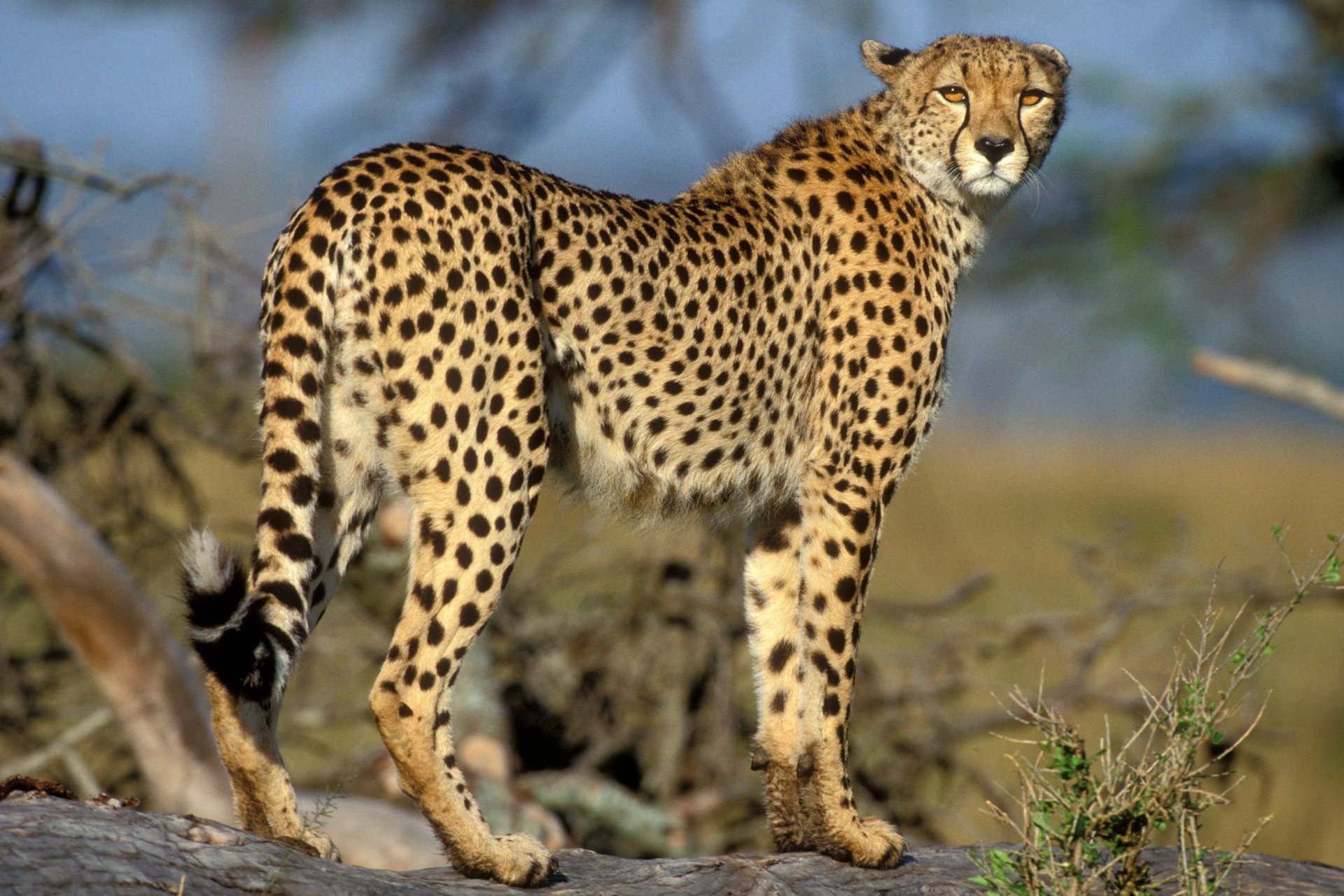The chimpanzee
The majority of western Uganda's primary tropical forests are home to chimpanzees, making Uganda the country with the highest chances for chimpanzee tracking on the continent.
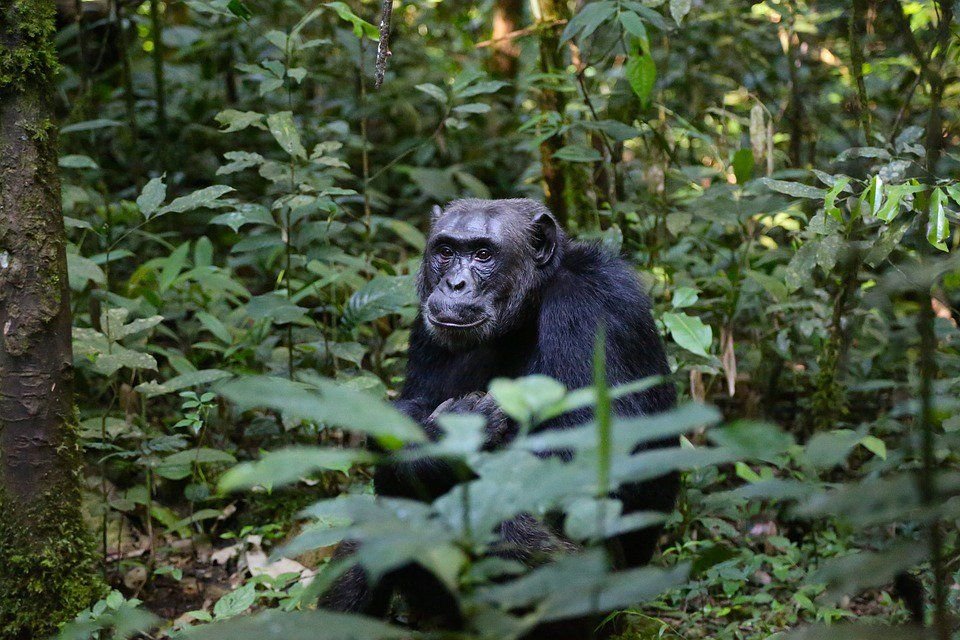
The chimpanzee (Pan troglodytes), also referred to as the chimp, is a species of great ape that is exclusive to the tropical African forests and savannah. Four of its subspecies have been determined, and a fifth has been suggested. One of the two subspecies, the common or eastern chimpanzee, is the sole subspecies found in Uganda.
According to the IUCN Status Survey and Conservation Action Plan 2010-2020, Uganda is home to a sizable population of common chimpanzees, with an estimated 5,000 individuals.
The chimpanzee has a coarse black coat of hair, but its face, fingers, toes, palms, and soles are all bare. It is bigger and stronger than a bonobo, weighing between 40 and 70 kg (88 and 154 lb) for males and between 27 and 110 kg (60 and 110 lb) for females.
Chimpanzees graze and travel in relatively smaller groups during the day, although they often reside in groups of 15 to 150 people. The hierarchy of the species is strictly male-dominated, and conflicts are typically resolved without the use of force. Almost all chimpanzee populations have been observed using tools, modifying sticks, rocks, grass, and leaves to obtain honey, termites, ants, nuts, and water when hunting. Also discovered were sharpened sticks made by the species, which were used to stab tiny mammals. It takes eight months for it to gestate. Although the infant weans itself from its mother at the age of three, it typically stays close to her for a number of more years.
The Chimpanzee Diet
Chimpanzees are frugivorous omnivores. Despite eating leaves, leaf buds, seeds, blooms, stems, pith, bark, and resin, it favours fruit over all other types of food. According to a research conducted in the Budongo Forest in Uganda, 64.5% of the animals' eating time was spent on fruits, 84.6% of which were ripe. The chimpanzee is mostly a herbivore, but it also consumes honey, soil, insects, birds and their eggs, small to medium-sized mammals, other primates, and insects.
Lifespan of a Chimpanzee
In the wild, chimpanzees typically live for less than 15 years on average, while those who reach the age of 12 may continue to live for an additional 15 years. Chimpanzees living in the wild occasionally survive for nearly 60 years. The median longevity of a male captive chimpanzee is 31.7 years, whereas the median lifespan of a female captive chimpanzee is 38.7 years. The oldest documented male captive chimpanzee lived to be 66 years old, and Little Mama was the oldest female at nearly 70 years old.
Chimpanzee Behaviour
Chimpanzees travel most of the time in tiny, transient groups made up of a few individuals, while living in communities that typically have 20 to 150 members. Any age and gender combination may make up these categories. Males and females both take solo trips occasionally.
At the core of social structures are males, which patrol the territory, protect group members, and search for food. Males remain in their natal communities, while females generally emigrate at adolescence. Males in a community are more likely to be related to one another than females are to each other. Among males, there is generally a dominance hierarchy, and males are dominant over females.
There is a clear hierarchy of authority among male chimpanzees. Male leaders frequently display aggression, even when the balance of power is stable. Males create coalitions that have been labelled "exploitative" and are built on a person's power in agonistic conflicts in order to maintain and advance their social status.
Males with low status frequently change their allegiance in conflicts with men of higher status. Males in lower positions gain from an unstable hierarchy and frequently experience more sexual possibilities in the event of a dispute or conflict.
Reproduction in Chimpanzees
Every five to six years, female chimps typically give birth to a single chimp (rarely twins). A young chimpanzee will cling to the fur on its mother's tummy for the first six months of its life before riding on her back until it is two years old.
After that, the child will spend the following seven to ten years by its mother's side, picking up skills like tool usage, food gathering, and nest building.
Chimpanzee infants depend on their mothers for care, protection, and instruction just like human infants do. Like us and our mothers, chimpanzee mothers and their young share a special attachment.
Where to see chimpanzees in Uganda
The majority of western Uganda's primary tropical forests are home to chimpanzees, making Uganda the country with the highest chances for chimpanzee tracking on the continent.
The Kyambura Gorge in Queen Elizabeth National Park, Semliki Wildlife Reserve, the Budongo and Kanyiyo Pabidi forests in Murchison Falls National Park, and Kibale Forest National Park all have chimpanzee groups that have been habituated by the Uganda Wildlife Authority (UWA) for monkey tourism.
The best chances to encounter chimpanzees in the wild are on chimpanzee tracking expeditions that leave from the Kanyanchu trailhead in Kibale Forest. The half-day chimpanzee trekking experience and the full-day chimpanzee habituation experience are the two different chimpanzee experiences available.
What's Your Reaction?
 Like
1
Like
1
 Dislike
0
Dislike
0
 Love
0
Love
0
 Funny
0
Funny
0
 Angry
0
Angry
0
 Sad
0
Sad
0
 Wow
0
Wow
0





























































